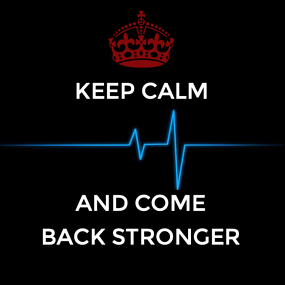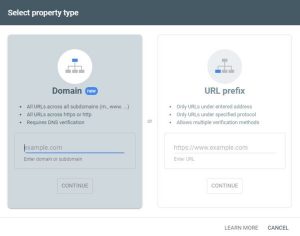For data-hungry marketers looking to improve their websites, bounce rate is just one of many important metrics to consider. Yet, it’s also one of the most misleading.
In fact, misinterpreting bounce rates can actually steer your content strategy in the entirely wrong direction. To help you avoid that fate, here is a quick primer on the basics, curious scenarios to avoid and helpful tips to improve your bounce rate.
Bounce rate 101
Some things you need to know right off the bat:
- A “bounce” is when a visitor views only one page of your site before leaving. Google explains that bounce rate is your percentage of single-page sessions, or a session where the person left your site from the page they entered without interacting with the page. (For those analytics gurus who want a really in-depth understanding of interactions that influence bounce rate, read this excellent post from Analytics Ninja.)
- Bounce rate applies only to the first page a visitor sees. In other words, the moment a visitor clicks through to another page, bounce rate no longer applies.
- Bounce rate doesn’t account for the time spent on your site (with one exception). Some say bounce rate represents visitors who immediately leave your page after entering, but that’s not quite right. Whether your visitor spends 5 seconds or 3 minutes on your page, if they do not interact with the page before leaving, it’s calculated as a bounce. The only exception to this is when a user “times out” after spending a very long time on one page. At that point, clicking through to another page will be seen as a new entrance and their bounce rate essentially resets.
- It’s not just the “Back” button. A visitor can bounce in a whole lot of ways: Clicking the “back” button, clicking a link to another website, closing their open tab or window, typing a new URL into the search bar, visiting a sub-domain of your website or timing out.
How Bounce Rate Can Be Useful
Bounce rates offer starting points and insights into the following areas:
- Keyword and content relevance. Are people finding what they’re looking for? Are you targeting the right keyword phrases?
- Usability. Is your website easy to navigate? Have you made it easy for people to venture deeper into the website? Are your pages loading quickly enough? Are you optimized for mobile?
- Design. Is your design attractive? Does it contribute positively to your trustworthiness? Are over-prominent ads driving people away?
- User behavior. Which of your content pieces are most successful at driving people further into your website and keeping them engaged?
- Traffic sources. Which websites are referring visitors that spend time reading content across multiple pages?
What’s the Catch?
Given everything you can learn from bounce rate, you might be tempted to use the metric as a hard-and-fast measurement of how well your page is performing.
But bounce rate is tricky.
You can’t just say, “High bounce rates are bad; low bounce rates are good.” In fact, there are often situations where a low bounce rate might actually indicate a problem: Imagine that a user enters your site, but is confused by navigation. Feeling frustrated, they click around trying desperately to find the right information before giving up and leaving. In that case, a low bounce rate certainly means your user experience is poor.
Believe it or not, a high bounce rate can also be an indicator of perfect relevance. As Nick Eubanks explains in his post on reducing bounce rate, a high bounce rate can mean you’re acquiring the wrong kind of traffic to your website – or exactly the right kind!
For example, imagine that a visitor enters your site after searching for a topic that surfaces your blog post on the subject. They read the blog post in entirety and find everything they needed to know. While some users might read other blogs on your site, most will likely read it, take the information and bounce.
What if your page is a list of valuable links and resources to other websites? If a visitor finds the site they were looking for on that list, they’ll click through and leave.
The same goes for commerce: What if you successfully drive a lead onto your sales sub-domain or a website like Etsy or eBay?
In all of these scenarios, your site is perfectly relevant and the high bounce rate should not be seen as an issue.
How to Use Bounce Rate Correctly
The above examples show that the best way to think about bounce rate is not as a prescriptive metric, but as a “check engine” light that prompts you to dig into other metrics and find out what the real problem is.
Here are some quick tips:
- Consider the purpose of the page.
If your bounce rate is high on pages meant to drive people further into the site (think home page or product pages), you should dig further to find out what’s wrong.
- Evaluate your sources.
Where is the traffic to high bounce pages coming from, and what keywords are driving it? Are those keywords actually relevant to what’s being offered? If not, it’s time to improve your targeting or refine your messaging.
- Check scrolling and click stats.
It helps to know how visitors actually interact with your page before bouncing. For example, are they reading the whole thing or just a few paragraphs? You can use Riveted and Scroll Depth to get deeper insights into these sorts of interactions. You can also use Google Analytics to track clicks and find out where people are leaking off-site.
- Look at conversion rates.
If your bounce rate is high but the conversion rate is also high (a download, form submission, etc…), proceed with caution: you may not have a problem. If both bounce rate and conversation rate are low, however, something’s gone wrong.
- Make sure you’ve implemented properly.
Tiny errors (like listing your Google Analytics code twice) can mess up your stats. Make sure you’ve implemented properly to avoid fragmented data. This infographic from KISSMetrics can be a useful launching point.
A big part of improving bounce rate is knowing what’s gone wrong using the above methods. These basic tips are also a great place to start:
- Make compelling calls-to-action on converting pages.
- Invest in a professional, trust-inspiring design.
- Make navigation easy and intuitive.
- Improve the relevance of your content and keyword targets.
- Check for usability issues (like slow load speeds or mobile incompatibility).
- Be cautious with pop-ups and auto-playing video/audio (people hate these!).
- Make your site search prominent to help visitors find what they need.
- Open external links in a new window.
Despite all the tricks and exceptions, perhaps the worst thing you can do with bounce rate is not consider it at all. While you must be careful and deliberate about the insights you take away from this metric, minding your bounce rate numbers will help you identify issues, improve experiences and ultimately, build a better website for your customers.
Content relevance is key to improving bounce rate. Make sure you’ve identified who is visiting your site and serve them the right content format.
(332)





